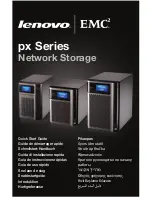
676
Configuring IP Multicast Routing
Information About Cisco’s Implementation of IP Multicast Routing
If the packet has a multicast IP address and a unicast MAC address, the packet is forwarded in software. This can
occur because some protocols on legacy devices use unicast MAC addresses with multicast IP addresses.
If the packet has a multicast IP address and an unmatched multicast MAC address, the packet is dropped.
This section includes the following topics:
Information About IGMP, page 676
Information About PIM, page 677
Information About Source-Specific Multicast, page 681
Information About Source Specific Multicast Mapping, page 683
Information About PIM Shared Tree and Source Tree, page 684
Information About IGMP
To participate in IP multicasting, multicast hosts, routers, and multilayer switches must have the IGMP operating. This
protocol defines the querier and host roles:
A querier is a network device that sends query messages to discover which network devices are members of a given
multicast group.
A host is a receiver that sends report messages (in response to query messages) to inform a querier of a host
membership.
A set of queriers and hosts that receive multicast data streams from the same source is called a multicast group. Queriers
and hosts use IGMP messages to join and leave multicast groups.
Any host, regardless of whether it is a member of a group, can send to a group. However, only the members of a group
receive the message. Membership in a multicast group is dynamic; hosts can join and leave at any time. There is no
restriction on the location or number of members in a multicast group. A host can be a member of more than one
multicast group at a time. How active a multicast group is and what members it has can vary from group to group and
from time to time. A multicast group can be active for a long time, or it can be very short-lived. Membership in a group
can constantly change. A group that has members can have no activity.
IP multicast traffic uses group addresses, which are class D addresses. The high-order bits of a Class D address are
1110. Therefore, host group addresses can be in the range 224.0.0.0 through 239.255.255.255. Multicast addresses in
the range 224.0.0.0 to 24.0.0.255 are reserved for use by routing protocols and other network control traffic. The
address 224.0.0.0 is guaranteed not to be assigned to any group.
IGMP packets are sent using these IP multicast group addresses:
IGMP general queries are destined to the address 224.0.0.1 (all systems on a subnet).
IGMP group-specific queries are destined to the group IP address for which the switch is querying.
IGMP group membership reports are destined to the group IP address for which the switch is reporting.
IGMP Version 2 (IGMPv2) leave messages are destined to the address 224.0.0.2 (all-multicast-routers on a subnet).
In some old host IP stacks, leave messages might be destined to the group IP address rather than to the all-routers
address.
IGMP Version 1
IGMP Version 1 (IGMPv1) primarily uses a query-response model that enables the multicast router and multilayer switch
to find which multicast groups are active (have one or more hosts interested in a multicast group) on the local subnet.
IGMPv1 has other processes that enable a host to join and leave a multicast group. For more information, see RFC 1112.
Содержание IE 4000
Страница 12: ...8 Configuration Overview Default Settings After Initial Switch Configuration ...
Страница 52: ...48 Configuring Interfaces Monitoring and Maintaining the Interfaces ...
Страница 108: ...104 Configuring Switch Clusters Additional References ...
Страница 128: ...124 Performing Switch Administration Additional References ...
Страница 130: ...126 Configuring PTP ...
Страница 140: ...136 Configuring CIP Additional References ...
Страница 146: ...142 Configuring SDM Templates Configuration Examples for Configuring SDM Templates ...
Страница 192: ...188 Configuring Switch Based Authentication Additional References ...
Страница 244: ...240 Configuring IEEE 802 1x Port Based Authentication Additional References ...
Страница 274: ...270 Configuring SGT Exchange Protocol over TCP SXP and Layer 3 Transport Configuring Cisco TrustSec Caching ...
Страница 298: ...294 Configuring VLANs Additional References ...
Страница 336: ...332 Configuring STP Additional References ...
Страница 408: ...404 Configuring DHCP Additional References ...
Страница 450: ...446 Configuring IGMP Snooping and MVR Additional References ...
Страница 490: ...486 Configuring SPAN and RSPAN Additional References ...
Страница 502: ...498 Configuring Layer 2 NAT ...
Страница 559: ...555 Configuring Network Security with ACLs How to Configure Network Security with ACLs Creating a Numbered Extended ACL ...
Страница 770: ...766 Configuring IPv6 MLD Snooping Related Documents ...
Страница 930: ...926 Configuring IP Unicast Routing Related Documents ...
Страница 956: ...952 Configuring IPv6 Unicast Routing Configuring IPv6 network 2010 AB8 2 48 network 2010 AB8 3 48 exit address family ...
Страница 976: ...972 Configuring Cisco IOS IP SLAs Operations Additional References ...
Страница 978: ...974 Dying Gasp ...
Страница 990: ...986 Configuring Enhanced Object Tracking Monitoring Enhanced Object Tracking ...
Страница 994: ...990 Configuring MODBUS TCP Displaying MODBUS TCP Information ...
Страница 996: ...992 Ethernet CFM ...
Страница 1030: ...1026 Working with the Cisco IOS File System Configuration Files and Software Images Working with Software Images ...
Страница 1066: ...1062 Using an SD Card SD Card Alarms ...
















































